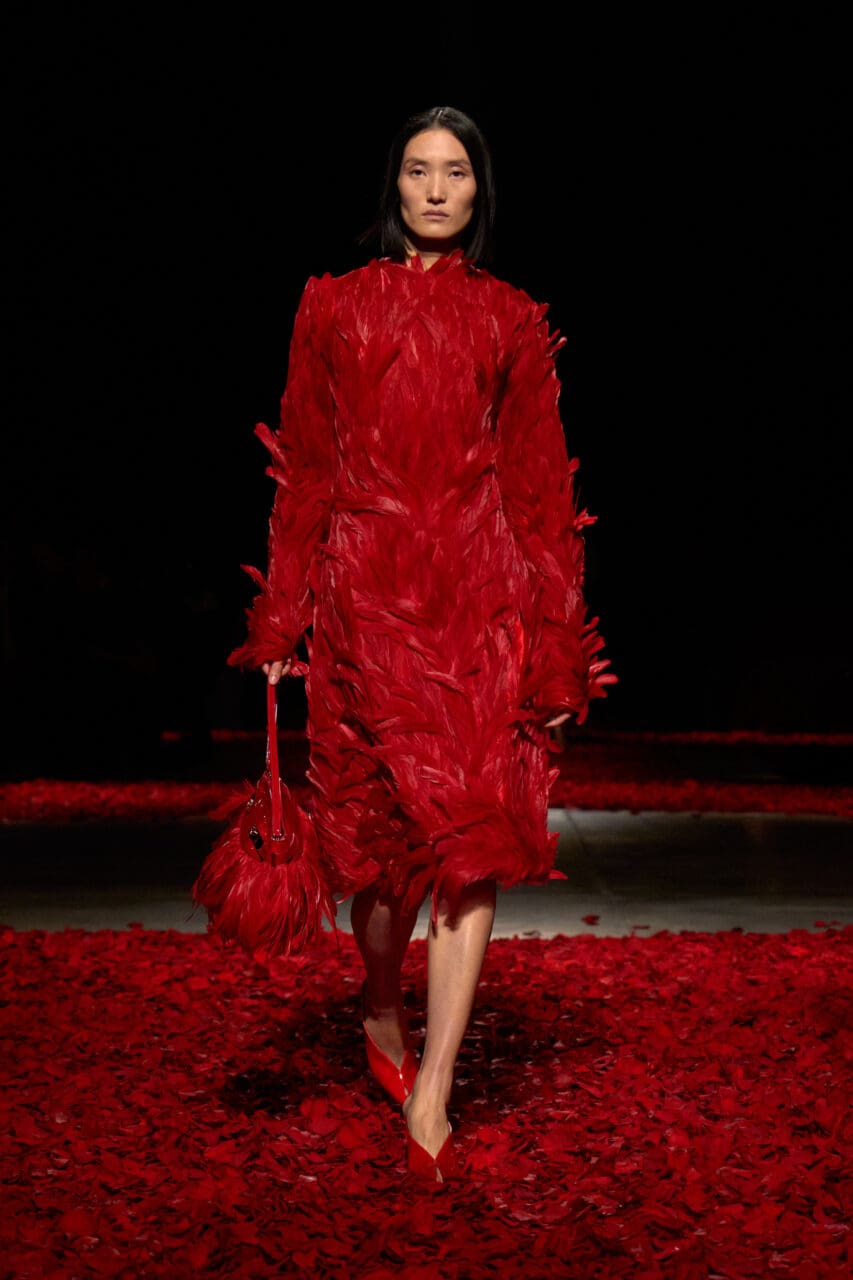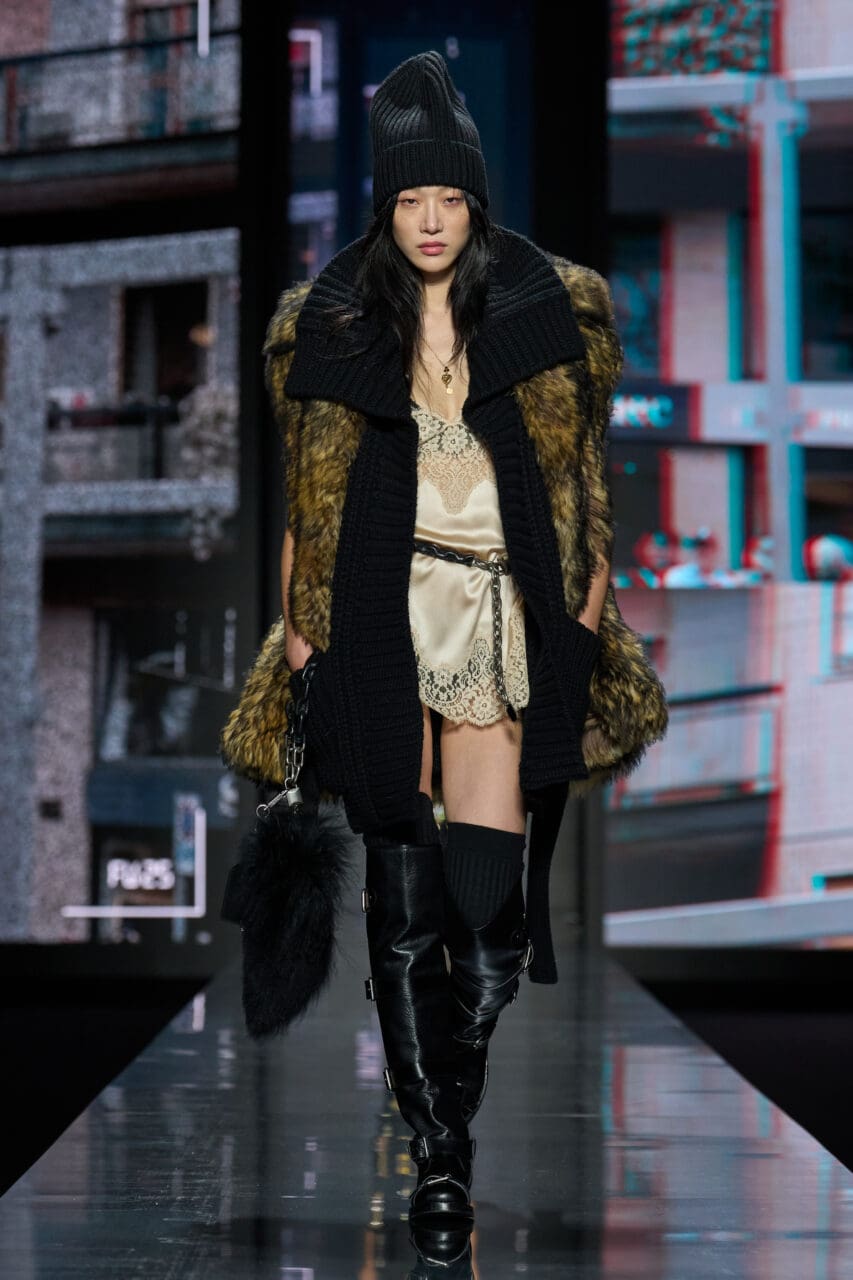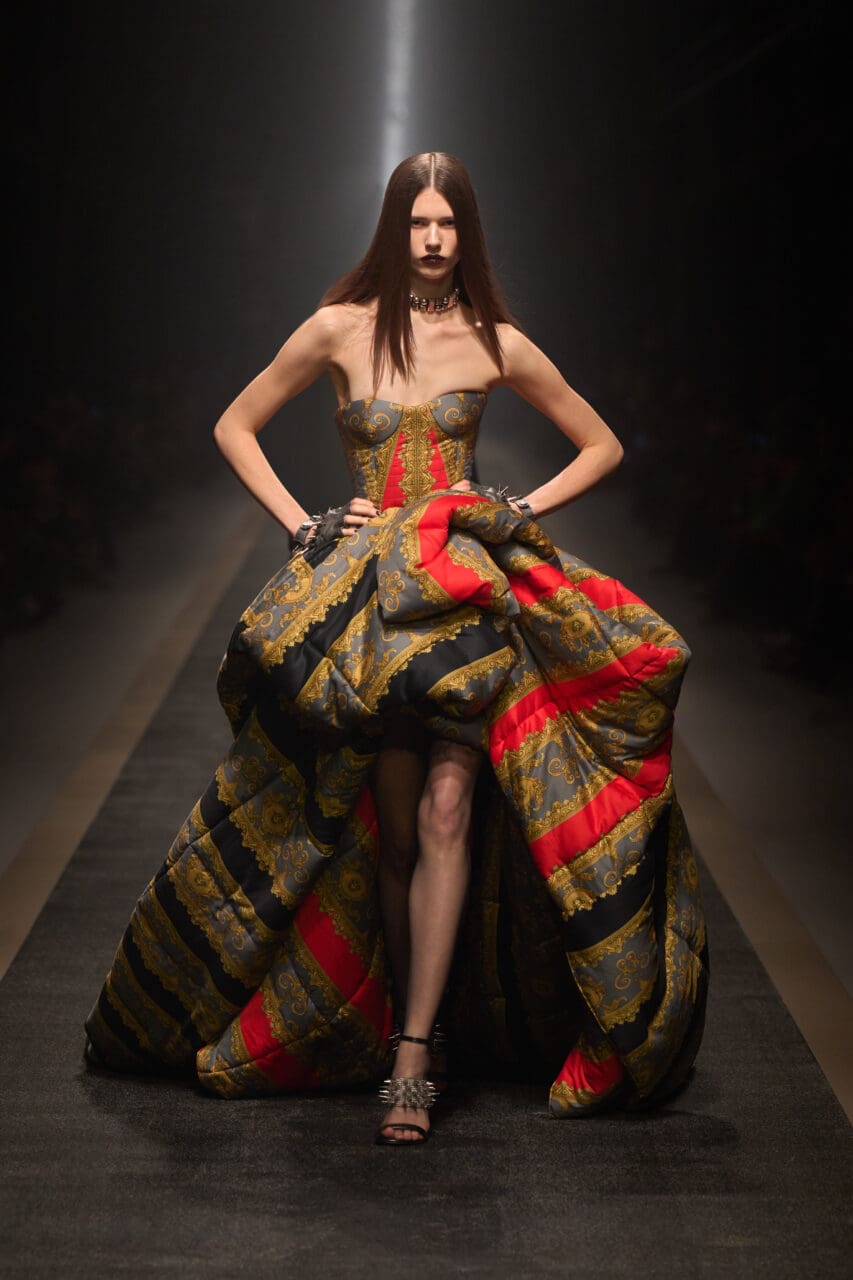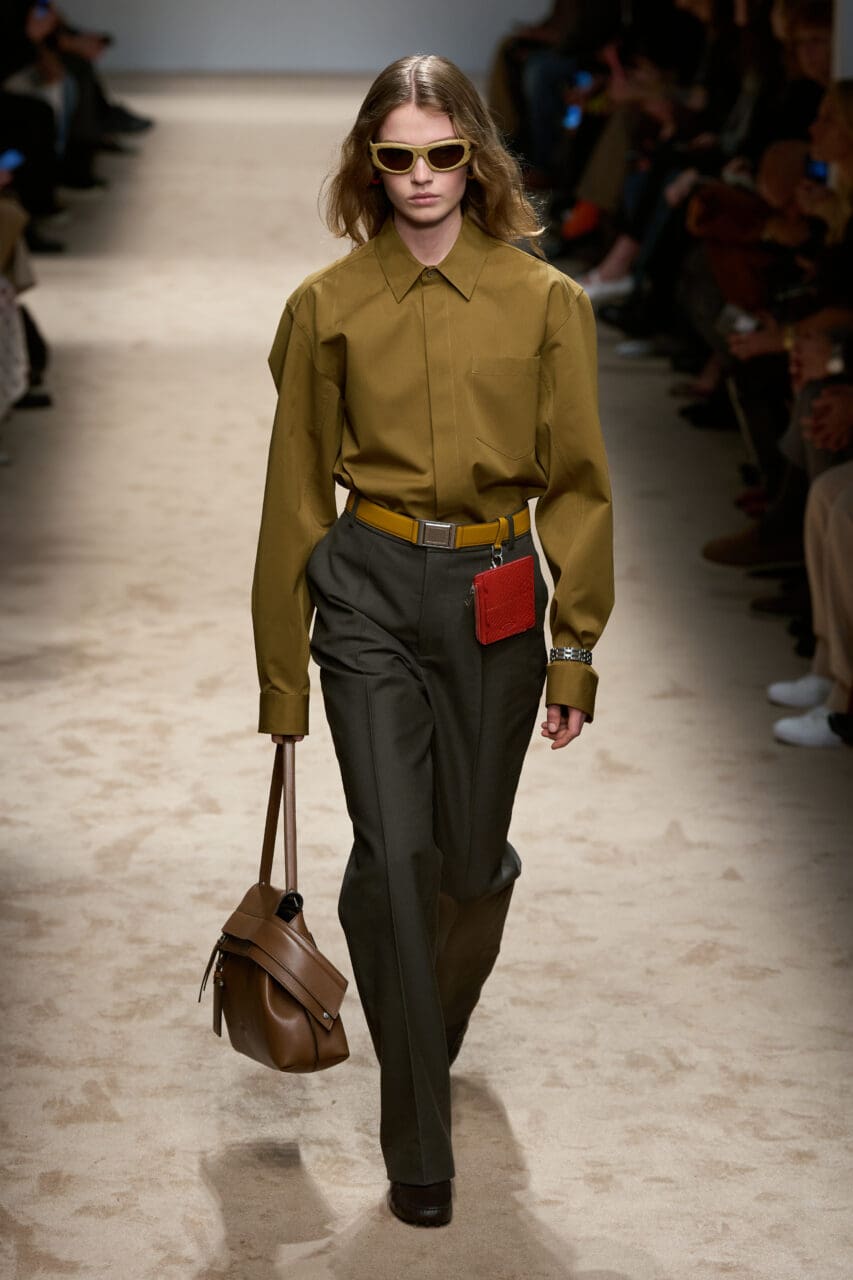By my reckoning, of all the names that have guest-designed Jean Paul Gaultier collections since the project started mid-pandemic, Nicolas Di Felice is the greenest. In fact, his debut at Courrèges happened the same year that this Gaultier collaborations concept got off the ground—2021. But if Di Felice has less runway experience than predecessors like Sacai’s Chitose Abe or Balmain’s Olivier Rousteing, it hardly showed at tonight’s presentation.
It was hotter than Hades in JPG’s headquarters, and it wasn’t just that the air conditioning went out or that the skylights had turned the runway into a veritable greenhouse. Since arriving at Courrèges, Di Felice has yanked it out of its heritage label slumber, transforming it into a go-to label for young people looking for sexy club wear and cool vinyl separates that nod at its Space Age origins without dwelling upon them.
Di Felice was a boy in Belgium when Madonna first wore Gaultier’s cone bra, but the French designer made a strong impression: “For me and for so many queer, different people from the countryside—from everywhere in the world—he represented Paris, a city where everything is possible. He was really the first one to celebrate different people. Everybody remembers this about him and it’s a good thing, because he actually did it.”
The collection told a story about a Paris arriviste, who wears covered up clothes: jackets and dresses with long sleeves, long skirts, and necklines that climb up the face. Slowly, as the show progressed, the head emerged, then the shoulders, and by the end, dresses were peeling off the hips and hands were tucked into the gaps in the fabric in an erotic gesture similar to the one that caused such a stir at Di Felice’s last Courrèges show. The clothes also traveled the spectrum from dark to light.
For each of the looks there was one from the archive that inspired it on Di Felice’s board, but the collection’s fil rouge was the hook-and-eye. Having found a fabric swatch embroidered with them in the archive, he used them as the connective tissue for the rectangles and squares he draped and twisted into his narrow, body-clinging shapes in gabardine de soie, gazar, and taffeta, fabrics that he has never been able to afford at Courrèges.
“I was able to make drapes that wouldn’t be possible without this technique,” he said. And not only that, the hooks-and-eyes are manipulatable, and will allow the wearer to adjust their level of exposure. The same adaptability concept applied to a slip dress that was worn undone to the waist, exposing a sleeveless shell underneath on which hooks-and-eyes were applied like studs. Strong and fragile at the same time—like the chainmail dress made from 40,000 interconnected hooks-and-eyes.
For anybody who wasn’t already aware, thanks to his work at Courrèges, this show confirmed it: Di Felice is a big, big talent.
Editor
Nicole PhelpsCredit
Lead image: Courtesy of Jean Paul Gaultier





